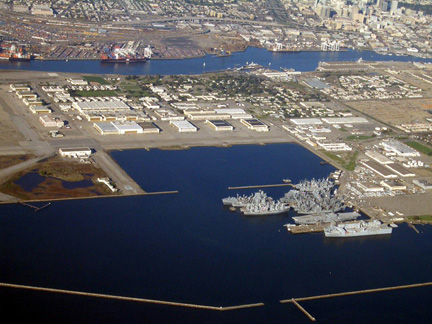For several years, researchers have been studying an anaerobic microbial community called a bioreactor that was sampled from chlorinated sediment collected at the Alameda Naval Air Station in Northern California. The microbial community is known to contain Dehalococcoides, bacteria often found in a community of other microorganisms at groundwater sites contaminated with compounds such as tetrachloroethene and trichloroethene. While the bacteria have been separately cultured and sequenced for potential bioremediation applications in cleaning up chlorine-contaminated regions, studies have shown that Dehalococcoides bacteria have higher dechlorination rates when they are grown in mixed cultures rather than cultivated separately.

Photo: Alameda Naval Air Station, courtesy of Telstar Logistics/Todd Lappin
Researchers want to know just what the rest of the microbial community in which Dehalococcoides bacteria are found do, and what impact they might have on bioremediation process. Because the individual members of the microbial community may not be cultured separately for sequencing and study, researchers are approaching this as a metagenomic project. Like working a puzzle from the finished appearance back to individual pieces, the microbial community will be sequenced as a whole and then partial individual genomes will be teased out. Armed with the metagenomic information, researchers then intend study all of the proteins in each organism and determine their specific structures and functions.
Principal Investigators: Eoin Brodie (Lawrence Berkeley National Laboratory)
Program: CSP 2009